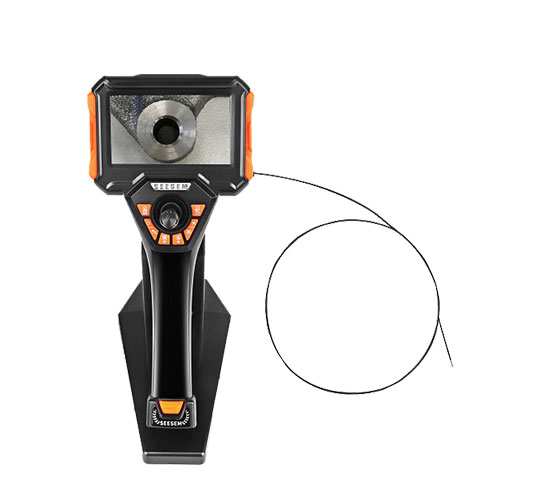Industrial videoscopes are valuable tools used in various industries for visual inspection and diagnostics in hard-to-reach areas. When choosing an industrial videoscope, several important factors need to be considered to ensure it meets the specific requirements of the application. This article outlines the key considerations for selecting an industrial videoscope to aid in making an informed decision.
Optics and Image Quality:
One of the critical factors to consider is the quality of optics and image produced by the videoscope. Look for videoscopes with high-resolution cameras, advanced lens systems, and good light sensitivity. This ensures clear, detailed images that enable accurate inspections and analysis of the target area.
Probe Length and Diameter:
The size and accessibility of the inspection area will determine the required probe length and diameter. Longer probes are needed for inspections in deep or confined spaces, while smaller diameters are suitable for narrow or tight areas. It is essential to select a videoscope with the right combination of length and diameter to reach the desired inspection points effectively.
Flexibility and Maneuverability:
Consider the flexibility and maneuverability of the videoscope when assessing its suitability for the intended application. Flexible insertion tubes allow for easy navigation through bends, curves, and obstacles, enabling access to complex inspection areas. Additionally, look for videoscopes with articulating or remotely controlled camera heads, which provide enhanced flexibility in inspecting objects from different angles.
Lighting and Illumination:
Proper illumination is crucial for obtaining clear and well-lit images during inspections. Ensure the videoscope has adjustable lighting options, such as LED lights, to provide sufficient brightness and contrast. Adjustable illumination allows for optimizing the lighting conditions based on the inspection environment, improving visibility and image quality.
Ergonomics and User-Friendliness:
Consider the ergonomic design and user-friendliness of the videoscope. Look for features such as a comfortable grip, intuitive controls, and a user-friendly interface. A well-designed videoscope enhances user comfort during prolonged inspections and facilitates easy operation, reducing the chances of user fatigue or errors.
Durability and Ruggedness:
Industrial environments can be harsh and demanding, so selecting a rugged and durable videoscope is essential. Look for videoscopes with sturdy construction, resistant to impact, water, dust, and other environmental factors. Robust videoscopes can withstand challenging conditions and ensure long-term reliability in industrial settings.
Data Management and Connectivity:
Consider the data management capabilities of the videoscope, such as storage capacity, file formats, and connectivity options. Look for videoscopes that offer convenient data storage, easy retrieval, and compatibility with external devices for data transfer and analysis. These features streamline the inspection workflow and facilitate data sharing and reporting.
Conclusion:
Selecting the right industrial videoscope requires careful consideration of optics, probe length, flexibility, illumination, ergonomics, durability, and data management features. By assessing these factors based on specific application requirements, industries can choose a videoscope that provides clear and detailed visual inspections, enhances productivity, and ensures efficient diagnostics in challenging environments.


